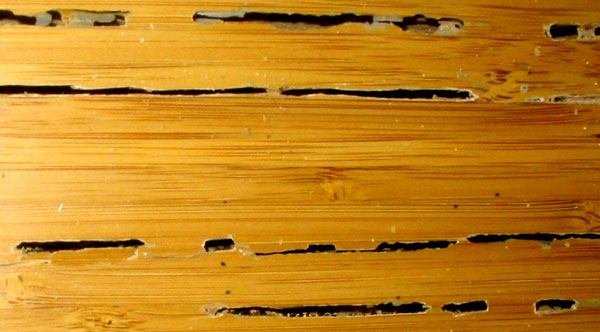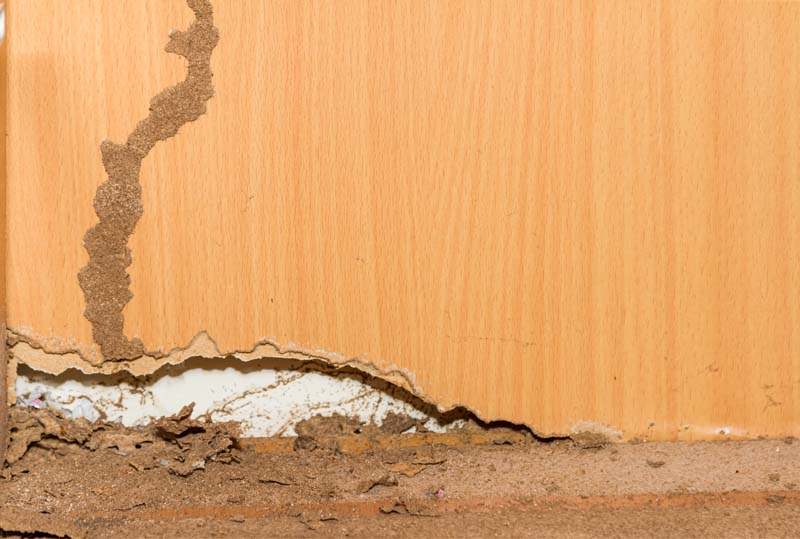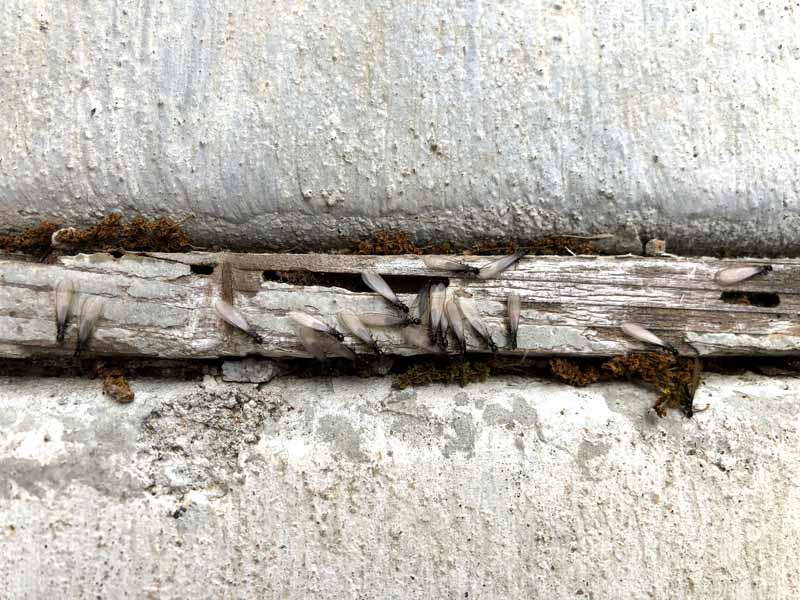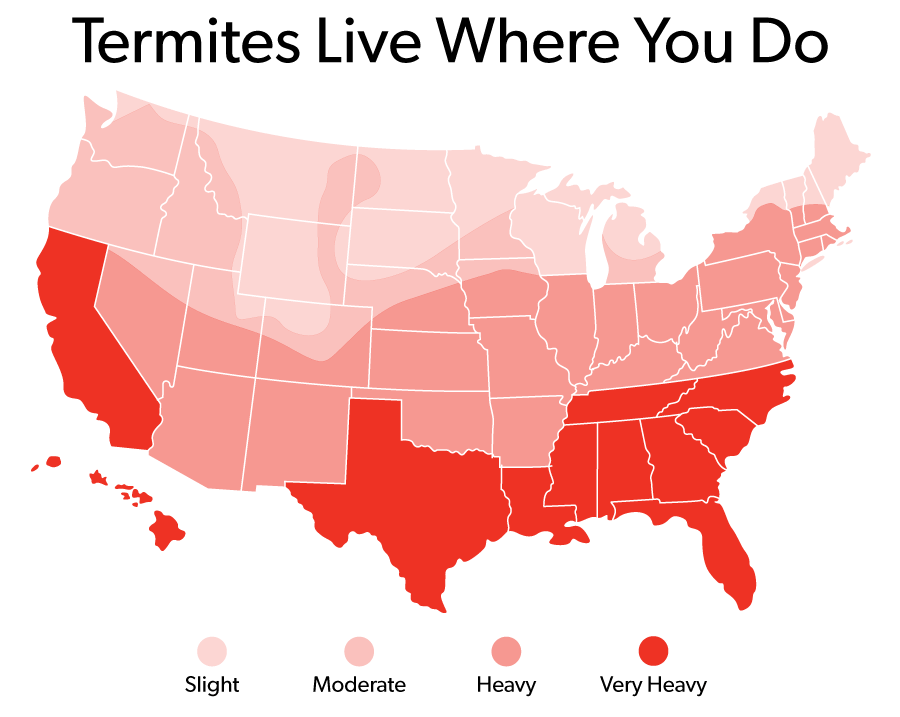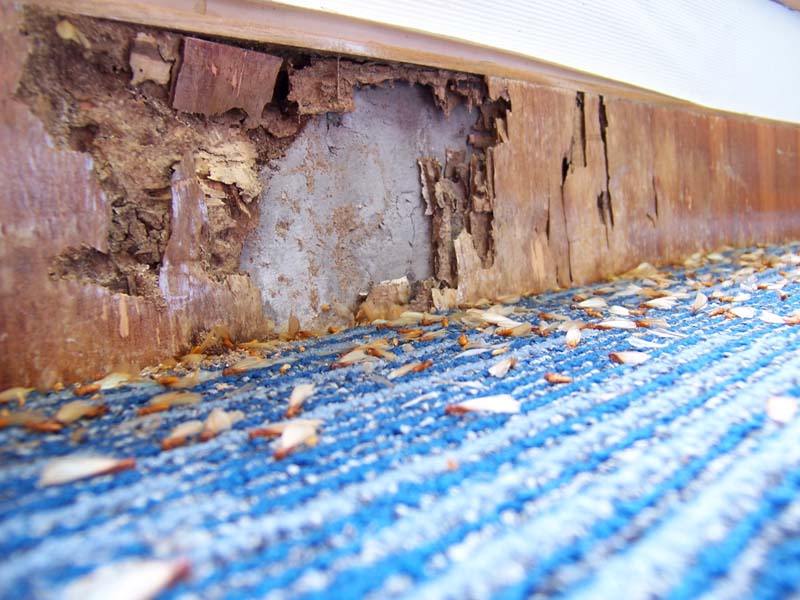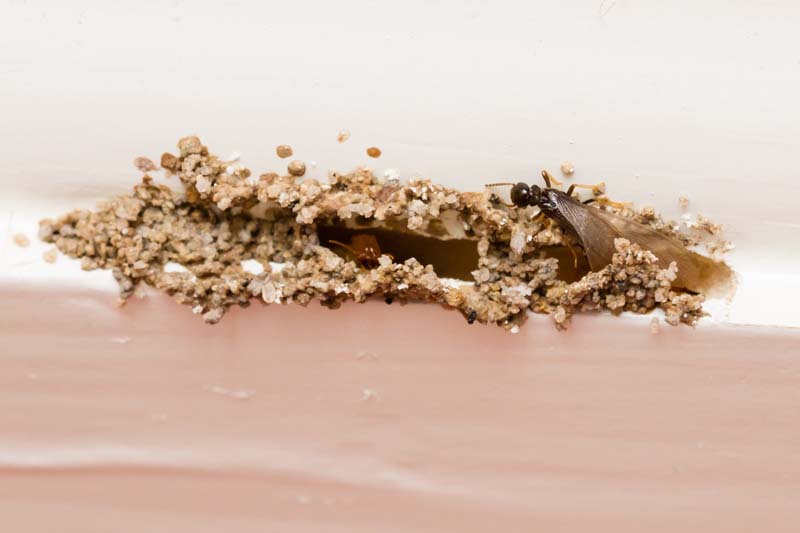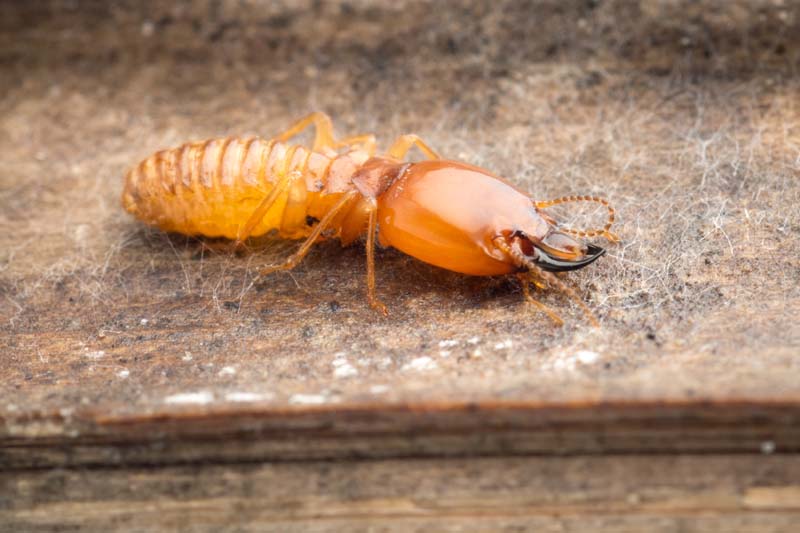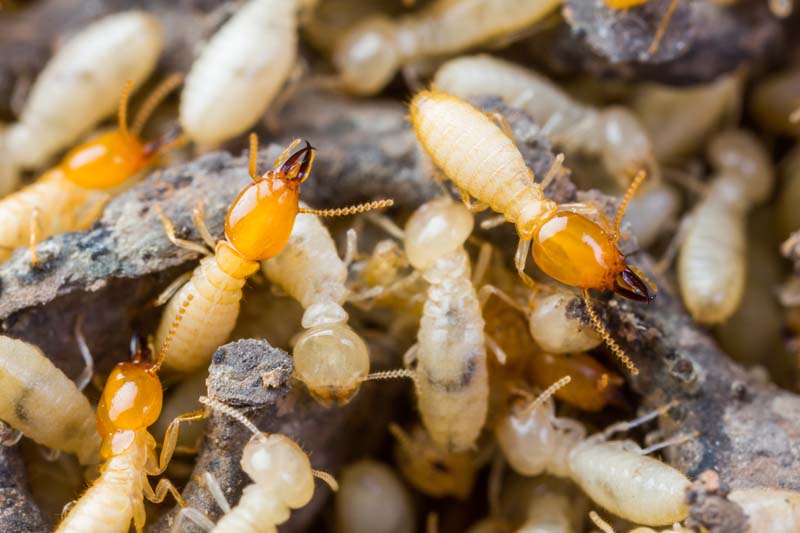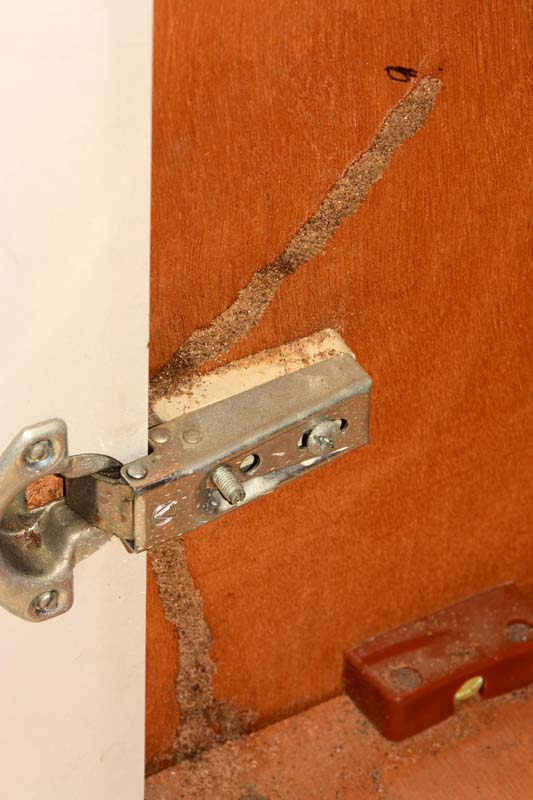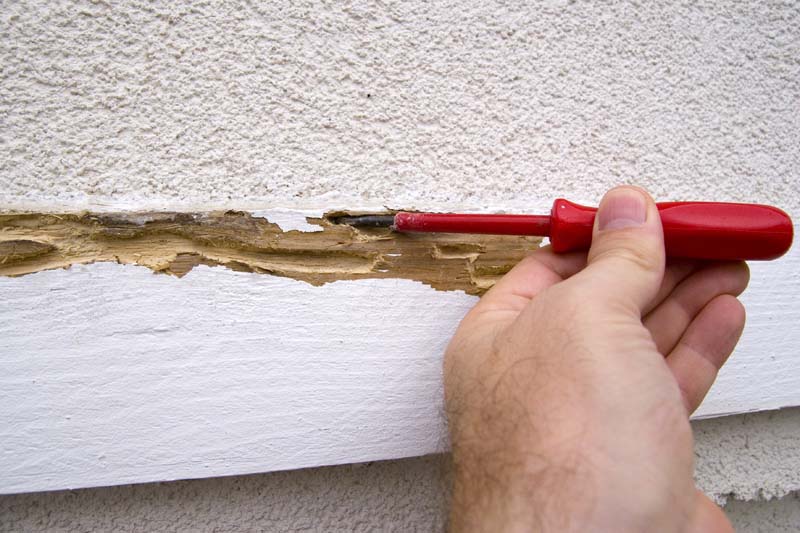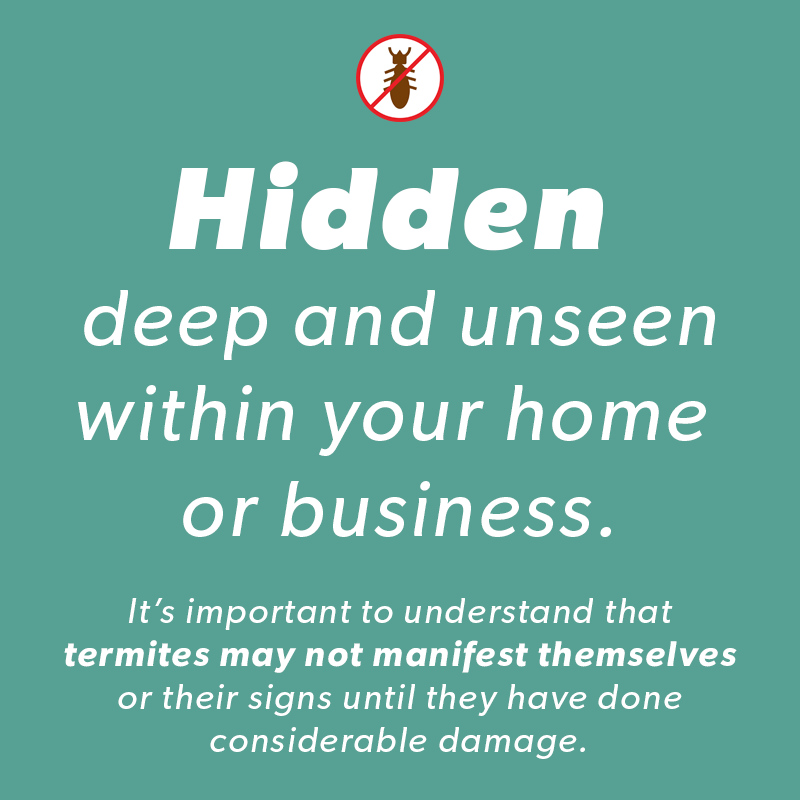What Do Termites Look Like?
What Are the Signs of Termites?
One of the most common questions we’re asked is, “How do I know if I have termites?” This guide will help answer that question. You’ll see examples of Subterranean and Formosan termites, which are two of the most aggressive and economically devastating termites found in Texas. You’ll also see the signs of termites, so you can be on the lookout for indications of a termite infestation.
Wood floor damage is one of the common signs of termites. Because termites can enter your home from underground, it’s common for them to pop up from under the floor.
Winged, ant-like insects can be one of the signs of termites. To confirm that they are flying termites, consult a licensed termite inspector.
Swarming termites can sometimes be mistaken for swarming ants. Consult a professional to determine whether they are ants or flying termites.
Hidden deep and unseen within your home or business. It’s important to understand that wood termites may not manifest themselves or their signs until they have done considerable damage. Because termites can fit through a hole in your foundation as small as 1/32 of an inch, they may not become apparent for years.
Start a Quote
Where To Look for Signs of Termites
Inside Your Home
- Crawl spaces – Because these areas aren’t easy for people to access, signs of termite activity here can easily go unnoticed. Make sure the crawl space is well lit or use a flashlight. Look for visible termites or termite droppings, which resemble tiny, rigid, wood-colored pellets.
- Wooden baseboards, window/door frames, wood floors, cabinets – Whether wooden surfaces are painted or unpainted, termite damage may not be visible until they’ve sustained heavy damage. Use a flat-bladed screwdriver to tap along the surface and listen for hollow spots.
- Walls – Look for pinholes, faint lines, or bubbling paint.
- Ceilings – Look for sagging or blisters.
Outside Your Home
- Foundation – Look for termite mud tubes on the foundation, rising up from the ground toward siding.
- Wood that touches the ground – Any wood that’s attached to your home and is also in direct contact with soil should be checked for termite damage.
- Windows and doors – These can be entry points for termite swarmers (flying termites). After swarming, winged termites shed those wings, so look for discarded wings here.
What To Do if You Think You Have Termites
Don’t wait. Contact us right away to schedule a free inspection. Learn more about how we eliminate existing termites and prevent termites from entering in the future — all without damaging your landscaping.
With All This Experience, We Know How To Handle Termite Infestations
Because we've been in business for more than 44 years, you can bet that we've seen a lot. Every home and business is unique, and we've got the right group of problem-solving professionals to provide the termite treatment and prevention you need.
Rest assured that all our service professionals are licensed and bonded. Our team is current on the latest technologies and termite prevention methods.
Ready to get started? Schedule service today!
Our online schedule will make it easy to schedule a new service or inspection.

